Expert’s Rating
Pros
- Lightweight construction
- Impressive cameras
- Great performance
- Long battery life and quick recharging
Cons
- Palm rejection could be better
- MIUI is a mixed bag
Our Verdict
Xiaomi has come up trumps with the 12 Lite. A comfortable lightweight design is accompanied by great performance, battery life and surprisingly good cameras. It’s a great all-rounder and makes you wonder why you’d need to spend more on a phone?
Xiaomi has been busy. Its 12S range of devices have recently been announced and following on is the mid-range 12 Lite model that promises the classic Xiaomi experience at a modest price.
But, in a fiercely competitive sector of the market, can the Chinese model compete? Here’s the full Tech Advisor review of the Xiaomi 12 Lite.
Design & Build
- Comfortable, light chassis
- Pretty colour schemes
- No IP waterproof rating
Usually, the Lite suffix on a smartphone denotes a downgraded spec sheet, but with the Xiaomi 12 Lite this seems more accurately applied to the chassis. Weighing in at a very comfortable 173g, it’s a nice device to hold for extended periods, plus the 159 x 74 x 7.3mm sits well in the hand, making a nice change from the bulky, 200g frames that seem to have become the norm in the last year or so.
The colour scheme is also fresh, with a choice of Pink, Black or the Green on my review model. The plastic back panel is graduated, so as you tilt it in the light it changes colour in a very pleasing manner. In the top left corner of the panel there’s also a raised rectangular area that houses the triple camera array. The plastic is clear, with a lite blue/green hue that again looks smart.

Foundry / IDG
As with the Redmi Note 11 Pro 5G that I reviewed recently (Redmi is a Xiaomi sub-brand), the edges are squared off rather than the curved type which featured on the Xiaomi 11 Lite 5G from last year. This adds to the grip and gives the 12 Lite a modern aesthetic.
The front panel is made up almost entirely of the 6.55in AMOLED display, with only a central punch-hole aperture for the camera interrupting the graphics. This is partly enabled by an under-display fingerprint sensor which saves space, plus it also means that the power button on the right flank is small as it doesn’t need to house a sensor either.
Add to this the volume controls, Dual-SIM slot and twin speakers, and the result is an attractive device that’s genuinely nice to use.
The display is protected by Corning Gorilla Glass 5, so it should withstand a fair bit of wear and tear, but there’s no listed IP rating on the 12 Lite (as there wasn’t with its predecessor the Xiaomi 11 Lite 5G). Keep it away from water though and it should be fine, especially if you use the included silicone case that Xiaomi puts in the box.
Alongside this, you’ll also find a 67W fast charger and cable to replenish the 4,300mAh battery via the phone’s USB-C port.
Screen & Speakers
- 6.55in AMOLED Full HD+
- 120Hz refresh rate
- HDR10+ and Dolby Vision
- Stereo speakers
The 6.55in AMOLED Full HD+ panel on the 12 Lite is well balanced and provides plenty of colour and definition. You can choose between either 60- or 120Hz refresh rates, with the former saving on battery life and the latter offering smooth scrolling. Not that the 60Hz option isn’t good, but once you’ve turned on the 120Hz setting you’ll probably want to leave it there as it feels great.
All of this is enhanced by the display’s support for HDR10+, Dolby Vision, as well as something Xiaomi calls TrueColor, which bolsters the palette of the panel.

Foundry / IDG
The Xiaomi 12 Lite doesn’t have the brightest screen on the market, with my measurements showing around 450nits maximum, but that proved enough to handle bright sunlight for the most part when turned up to full. Indoors or on more overcast days you won’t have any problem seeing what’s on the display.
Using the under-display fingerprint sensor was pleasingly easy, albeit with the initial setup taking a little longer than with a physical sensor in a button, as it was harder to know which part of my finger the sensor had tracked. This only added about 30 seconds to the process though, and after that I found that I could unlock the phone with a very high success rate of first-time attempts.
Pro tip: When saving your fingerprint, save two separate versions for each of the main fingers/thumbs you primarily use to unlock the device. This increases the chance of the sensor detecting you immediately.
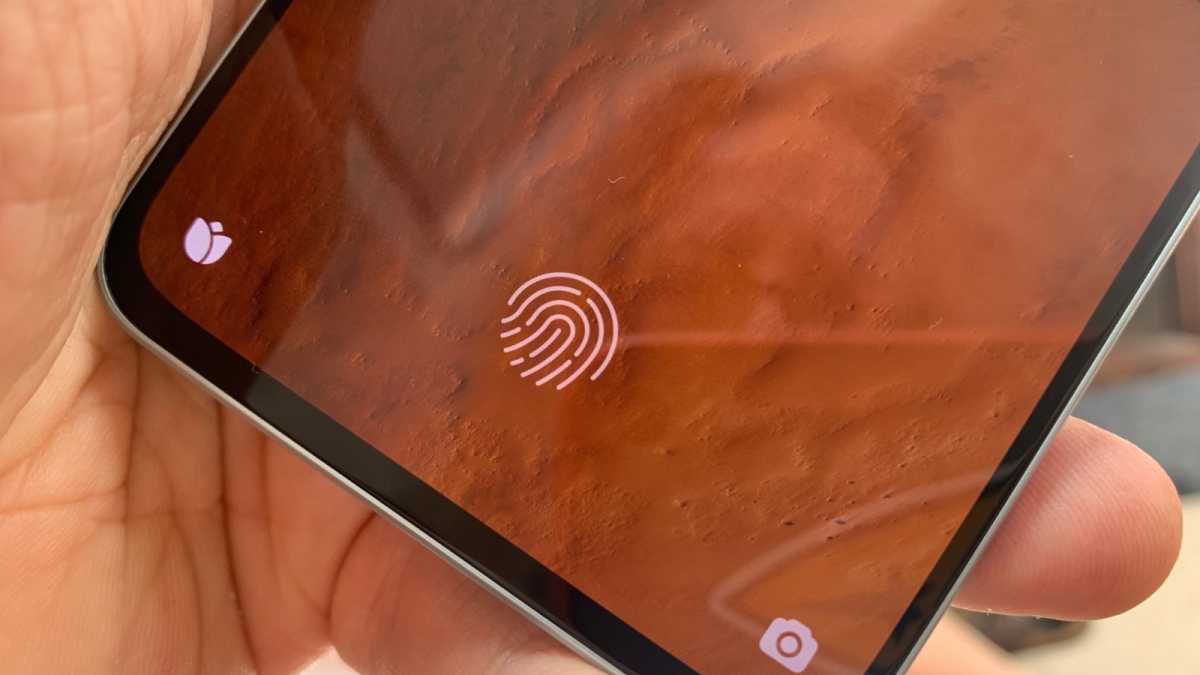
Foundry / IDG
Those wanting to game on the Xiaomi 12 Lite will also appreciate the 240Hz touch sampling rate which should aid those quick movements in the heat of battle. One minor gripe I had with the device along these lines was that the palm cancellation (where the phone ignores taps and swipes from other parts of your hands that accidentally touch the screen) wasn’t as good as it could be.
On a few occasions I suddenly found the screen switching to the All Opened Apps page because I’d rubbed against the smart button without realising. This can be fixed in software though, so hopefully an upgrade will further improve this area in the future.
On the audio side of things, you’ll find speakers at either end of the device, which produce a decent amount of sound. Sure, it won’t win over the hearts of any audiophiles out there, but for podcasts, audiobooks, watching videos or some light music use, the speakers can do a decent job.
There’s no 3.5mm headphone jack, so you won’t be hooking this up directly to a speaker, but the Bluetooth 5.2 capabilities mean that wireless headphones and speakers can instantly improve the audio output of the Xiaomi 12 Lite.
Specs & Performance
- Snapdragon 778G SoC
- 8GB RAM
- 128GB Storage
- Dual SIM
Perhaps surprisingly, Xiaomi has fitted the 12 Lite with the same Snapdragon 778G processor that appeared in the previous generation 11 Lite 5G. Whether this is down to the world-wide shortage of processors that has been going on for the last year or so is unknown, but to be fair the performance of the 12 Lite for most things people will usually do with their smartphones is on the money.
Opening apps and moving through various screens and menus are all swift and responsive. There’s no noticeable lag when using the device at all, and even in the cameras you get a quick launch with the cameras ready to go: essential if that ‘decisive moment’ appears before your eyes.
The Xiaomi 12 and Xiaomi 12 Pro both have the flagship Qualcomm 8 Gen 1 processor so this is a key difference.
No doubt the 8GB of RAM that comes in this variant helps with the performance, although you can order a 6GB version if you want to save some money (I wouldn’t advise this). Xiaomi also offers a virtual memory extension feature that will supposedly deputise up to 3GB of onboard storage as RAM.
The phone’s bigger brothers come with up to 12GB of RAM so bare that in mind if you think you’ll need more power.
Storage itself is a standard 128GB of UFS 2.2, but again you can opt for 256GB if you think this will be too small. In a move that will upset some users, Xiaomi has decided against supporting microSD cards in the 12 Lite, with the dual card slot only capable of holding SIM cards.
This means you’ll need to choose the configuration that suits your needs from the get-go, as you won’t be able to change it later. That’s disappointing, especially as the 11 Lite 5G offered a hybrid slot which could host either dual SIMs or a single SIM and microSD card.
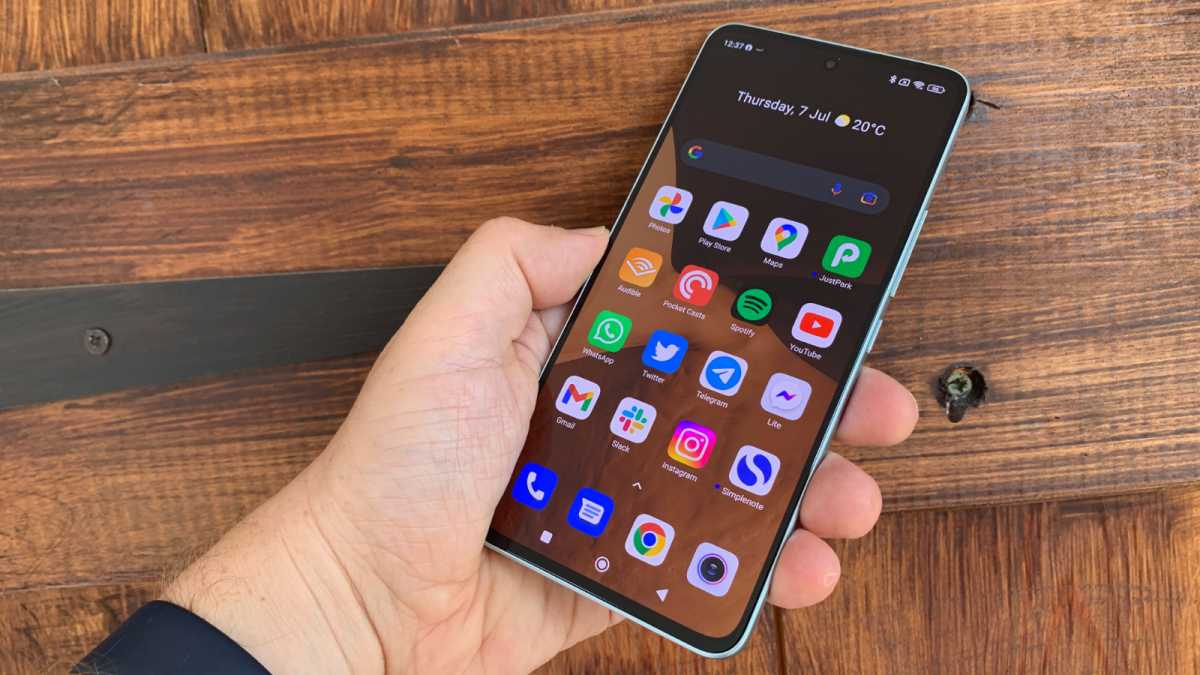
Foundry / IDG
In many ways, the Xiaomi 12 Lite shares the majority of its specs with the Xiaomi 11 Lite 5G. There’s the same processor I mentioned above, storage and memory configurations, and the list continues in terms of Wi-Fi 6, NFC, Bluetooth 5.2 not to mention the display is very similar, although the 12 Lite goes up to 120Hz refresh rate where the 11 Lite tops out at 90Hz.
A few areas where they differ is in terms of size, the 11 Lite is actually slimmer and lighter, battery charging speeds are faster on the 12 Lite, plus the cameras have been given an upgrade on the new model. We were impressed with the Xiaomi 11 Lite 5G, and it’s been reduced in price at the time of writing, so if you want most of what the 12 Lite offers but at a cheaper price, it’s worth considering.
That being said, the 12 Lite is a very nice to use and generally impressed by just getting on with everything and not making a fuss. Exactly what you want from a phone.
To see how it compares to others in its class. Here’s the standard benchmark testing that all review phones go through (due to technical difficulties with the site at the time of testing, the GFX Bench scores are not registered):
Cameras
- 108Mp f/1.88 Main camera with Samsung HM2 sensor
- 8Mp Ultrawide and 2Mp Macro
- Night Mode
- 32Mp Selfie camera
Mid-range devices often live or die by their cameras. In that case, the Xiaomi 12 Lite is in a very healthy state and should probably make it comfortably to old age. The triple camera combination of 108Mp f/1.88 main, 8Mp f/2.2 ultra-wide and 2Mp f/2.4 macro turn in some truly impressive results.
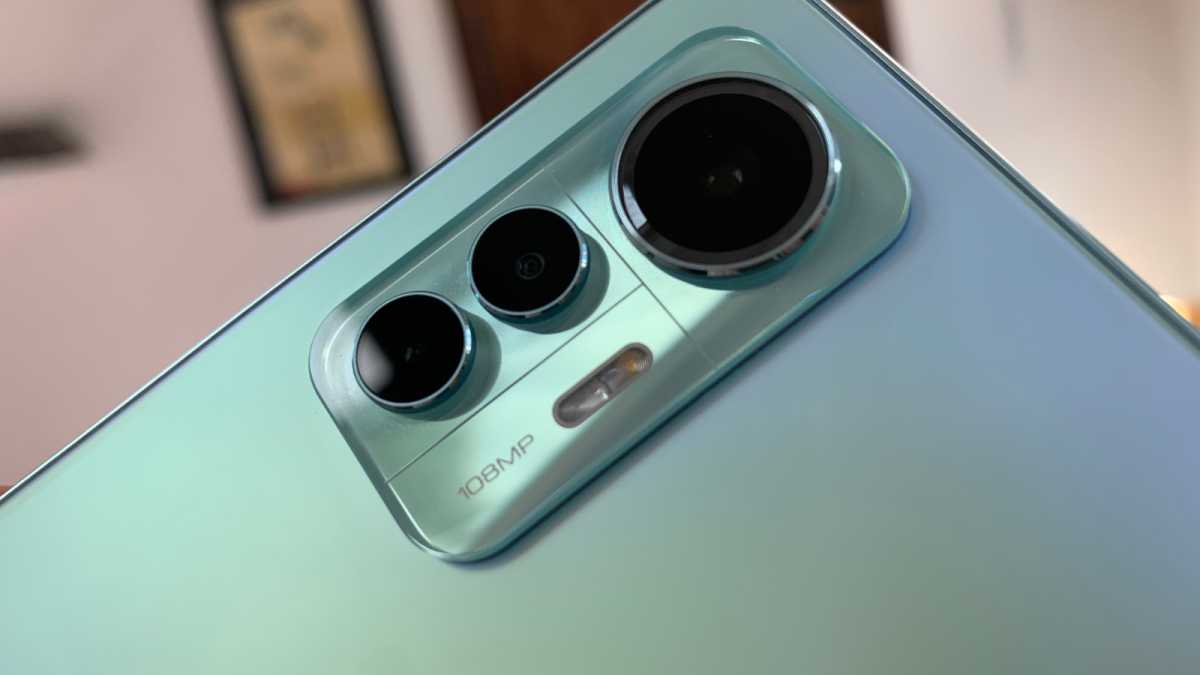
Foundry / IDG
Focussing is fast and usually tracks the intended subject matter (not always true with phones I’ve tested). In good light I got some excellent shots, whether it was close-ups of flowers, catching my dog in a heroic pose (waiting for a treat), landscape images or general everyday pictures.
More impressively, the night-time photos I managed to capture really did make me wonder if the phone was more expensive than I’d first thought. There is a Night Mode and it does a good job of picking out things like a dark blue boat in a harbour at night and making it visible. But, when I turned off the Night Mode and let the normal camera do its thing, I managed to get some atmospheric shots that I was proud of.
The metering seems well balanced, and so long as you have a wall or in my case the side of a bridge to rest the phone on when taking the image, then images remain well exposed and sharply focussed.
There is some noise in the images, which the software does its best to smooth out, which means any pictures you take will be absolutely fine for sharing on social media, but if you want to crop in and possibly print them off then you might see less impressive final images.
Here’s a selection on images I took with the Xiaomi 12 Lite:
Xiaomi includes various photography modes, including Macro, Portrait, Pro, Panorama, Slow Motion, Time Lapse and others, but be aware that several of these need to download before you can use them. So, you might want to play around with them at home before heading out and using up any of your data plan.
Video tops out at 4K/30fps, with the default being 1080p/30fps. You can capture some good footage with the camera, although the sound felt a bit thin. Moving from bright to dark areas didn’t seem to phase the sensor too much, although on very bright days there was a tendency to overexpose the edges of the footage.
But again, perfectly good for social media and the inclusion of OIS (optical image stabilisation) on the main sensor helps keep things smooth.
A 32Mp selfie camera is found on the front, and again it’s capable of some decent images. You’ll find more modes and filters built-in that can smooth out your skin or other such trickery, but the standard camera does a good job of capturing detail quickly and accurately.
While it’s not the best camera phone for those who want pro level images, as an everyday shooter in your pocket that lets you get those important shots and share them on Instagram or Facebook, the Xiaomi 12 Lite is a great option.
Battery Life & Charging
- 4300mAh battery
- 67W Fast Charging (with charger included)
- Xiaomi AdaptiveCharge
Battery life on the Xiaomi 12 Lite is very decent. Using the phone heavily across a day – watching some YouTube videos, lots of web browsing, emailing, social media apps and even the occasional phone call – left me with around 30% in the tank at bedtime (which is often past midnight).
Easing off on the screentime meant that I could easily get through two days on a single charge. Not that getting the device back to 100% is much of an inconvenience.
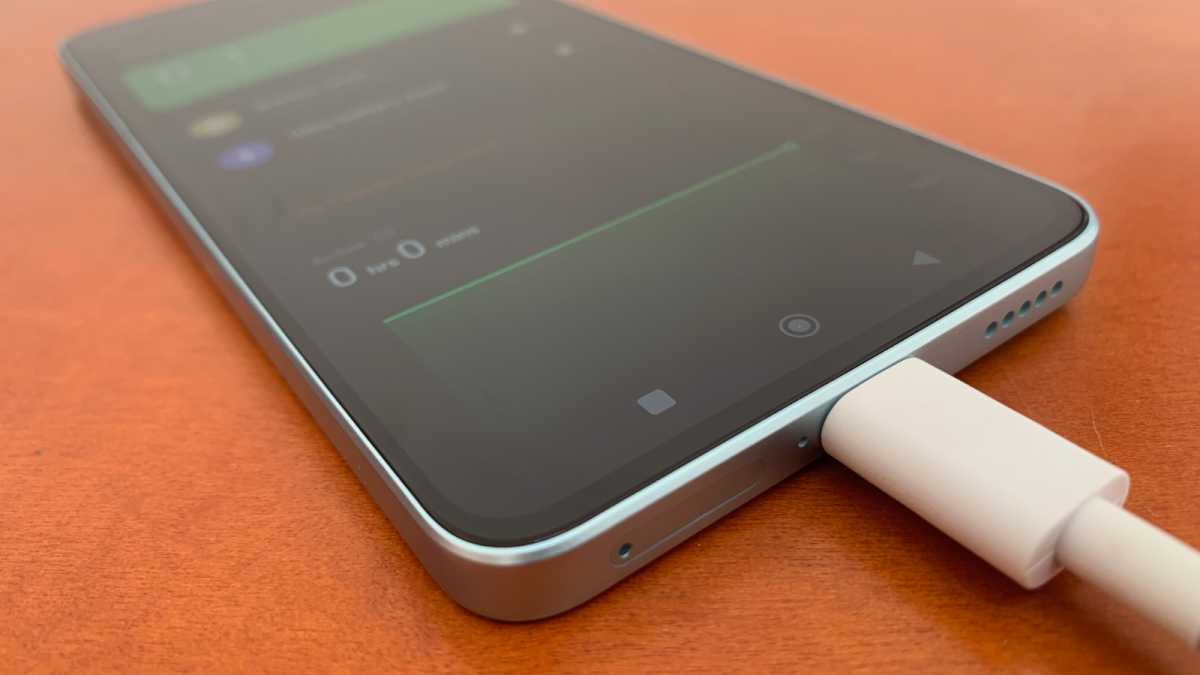
Foundry / IDG
Using the included 67W charger, the 12 Lite went from empty to full charge in 41 minutes, which is excellent. So, even if you decide to spend hours each day staring at the screen, you’ll be able to replenish the entire battery in less time that it takes to have your lunch.
There’s no wireless charging support for this model, so you’ll need to plug it in when you want to power it back up, but as I mentioned above you at least get the charger included in the box.
For benchmark fans, putting the Xiaomi 12 Lite through the PCMark Battery Test returned the result of 11 hours and 3 mins. Which is quite respectable if not remarkable.
Software & Apps
- MIUI 13
- Android 12
- Security updates until July 2026
If there’s one weak spot on the 12 Lite, then it’s probably the software. Don’t get me wrong, MIUI 13 is a perfectly serviceable system that offers plenty of features, but it does take a little getting used to. And I’m not the first person at Tech Advisor towers to find this to be the case.
For instance, wallpapers and themes all come via a Theme store. There’s plenty of free stuff, and you get ones bundled in with the phone, but it’s a slightly different approach to some of the other versions of Android that you may have already used.
Bloatware isn’t too bad, with the phone having a few games and social media apps pre-installed out of the box. Xiaomi also includes its own bespoke apps for notes, web browsing and other things, but this is kept to a minimum and most can be uninstalled.
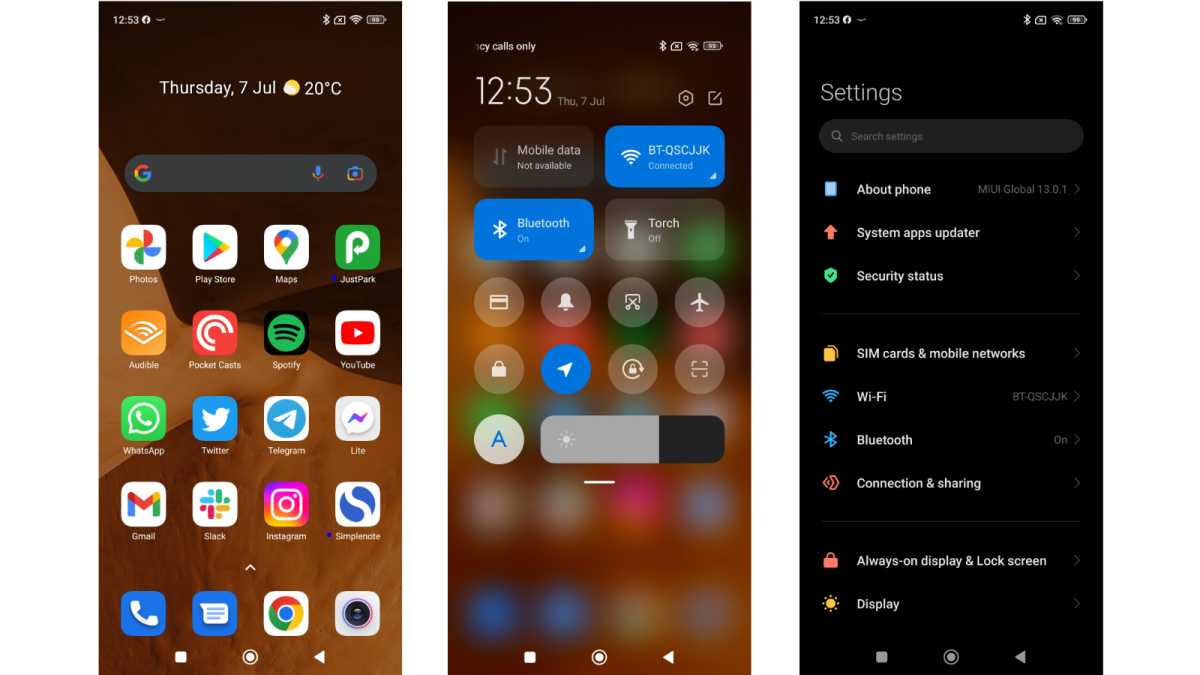
Foundry / IDG
I did find that the screen could be a little sensitive, especially when it comes to long-pressing icons. When moving apps from one screen to the other, the slightest wobble of my finger would make the phone think I was scrolling between pages, making it a little tricky to pick up the apps. A steady hand solved this, but if you’re used to whizzing around you might find this somewhat annoying.
Android 12 is running underneath MIUI 13, and Xiaomi now promises three major Android version updates plus four years of security updates across the lifespan of its devices. In short, this means the device will be usable for four years from its release date, but after that the security updates will stop and you will have to retire the phone. We’re not crazy that this is the case, as it means you’re less likely to hand on a phone to a relative, thus consigning it to a landfill somewhere. Sadly, this is the case across the industry, and four years is actually quite good. If you want longer, try Samsung or Apple.
Price & Availability
At the time of writing Xiaomi has only confirmed the price of the 12 Lite in US dollars, even though it won’t officially go on sale in America. We’ll update this with more pricing when it becomes available but here’s how the models break down:
- 6GB/128GB – $399
- 8GB/128GB – $449
- 8GB/256GB – $499
There’s a good chance that these prices may have the same numbers attached when they are launched on 9 July in the UK, Europe, and bigger ones (due to currency conversion rates) in India and other territories. As a reference point, the Xiaomi 11 Lite 5G was priced at £399/€399 for the 8GB/128GB variant, so the pricing on the 12 Lite could be around the same.
This brings the device into competition with the likes of the OnePlus Nord 2T, Realme GT 2 and Xiaomi stablemate the Poco X4 Pro 5G. All of these are great phones for less than £/$/€500 and the Xiaomi 12 Lite certainly doesn’t embarrass itself in this company.
Check out more options in our best mid-range smartphones chart.
Verdict
The Xiaomi 12 Lite is a very solid mid-range phone. The lightweight construction is a comfortable change from the heavier alternatives found at this price point, plus the squre-edged design is both modern and makes it easier to hold in the hand.
Performance is again very good, as are the cameras if you want something for social media platforms. The software can be a bit clunky at times, and the overly sensitive display takes a little getting used to, but these are minor gripes compared to all the other benefits on offer.
If you’re intending to spend this kind of money on a phone in 2022, the Xiaomi 12 Lite needs to be at the very top of your ‘ones to try’ list.
Specs
- 6.55-inch AMOLED FHD+ DotDisplay, with 120Hz refresh rate, 240Hz touch sampling, Dolby Vision and HDR10+ support, Corning Gorilla Glass 5
- Snapdragon 778G
- MIUI 13 with Android 12
- 6/8GB LPDDR4X RAM
- 128/256GB UFS 2.2 Storage
- 108Mp f/1.88 Main camera (with Samsung HM2 sensor)
- 8Mp f/2.2 Ultra Wide camera
- 2Mp f/2.4 Macro camera
- 32Mp f/2.45 Selfie camera
- 5G (Dual SIM)
- Wi-Fi 6
- NFC
- Bluetooth 5.2
- 4300mAh battery with 67W wired turbo charging
- Dual speakers with support for Dolby Atmos
- USB-C charging port
- 159 x 74 x 7.3mm
- 173g




